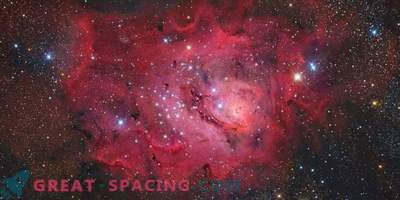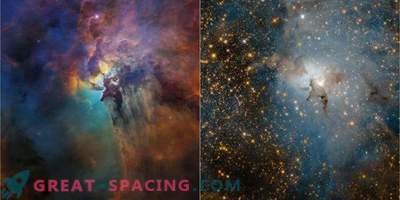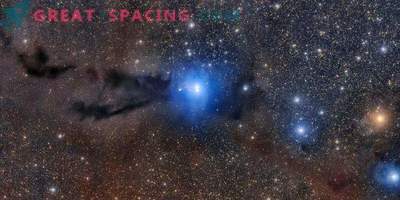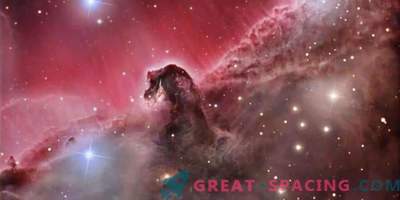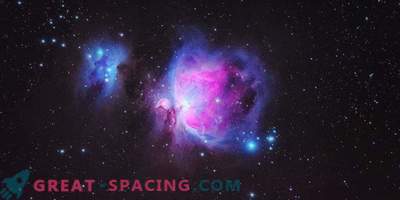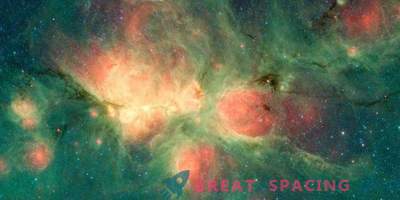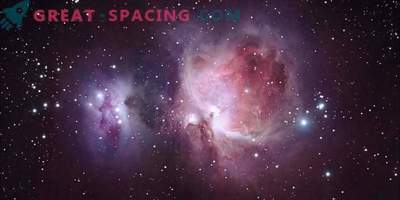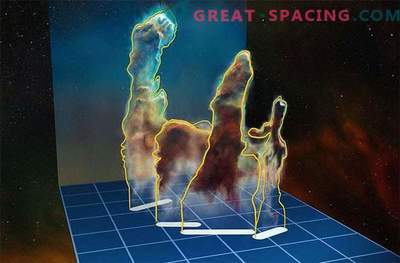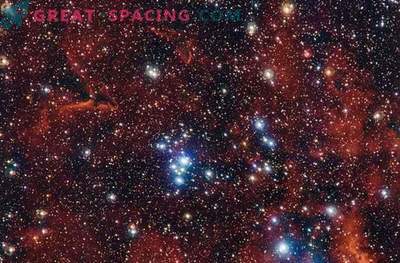
In the dark nebula LDN 673, 12 new faint Herbig-Haro (HH) objects were captured using the color composition method.
Linda Nebula 673 (LDN 673) is 650 light-years distant from us. This is an extremely dense and fragmented complex of dark clouds in the territory of Orel. Researchers believe that the LDN 673 holds the raw materials to form a huge number of new stars, and therefore can explain the details of the process itself. Despite its proximity, the nebula has not yet fully explored.
Scientists from the University of Alaska Anchorage decided to fix this. They watched the nebula to find out more information about the composition. For this purpose, a new method of creating color compositions using the MOSAIC optical camera was used on the 4-meter telescope of the Kit-Peak National Observatory (Arizona).

Color composite image HH 1183-1186. It seems that four objects come out of the edge of a dense cloud. HH objects can be distinguished by a deep red glow.
During the survey, they managed to find 12 objects NN. Four of them are designated HH 1183-1186. Most likely, they are associated with a cluster of 8 red infrared sources of class I. Five others (HH 1187-1191) were weak and could be associated with the young star T Tauri AS 353. The last three (HH 1192-1194) share a red source, coinciding with the infrared dark cloud.
The detection of NN objects hints at the formation of a new and long-term stellar birth in the Orel region, which means there are many T Tauri stars. Further observation may lead to the discovery of a young stellar population.
